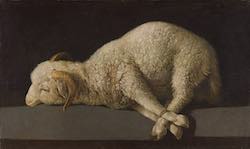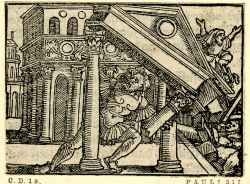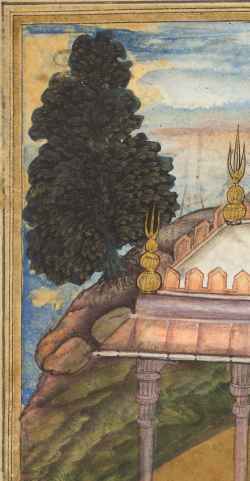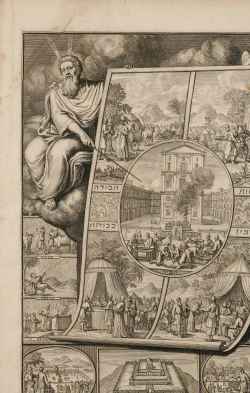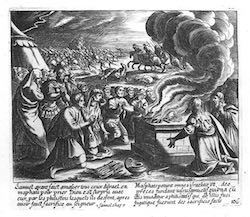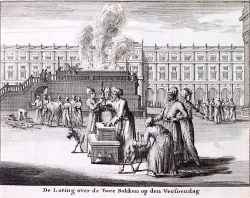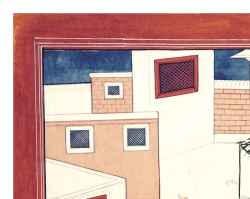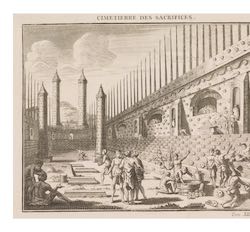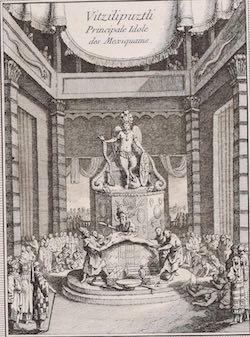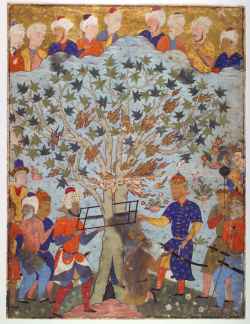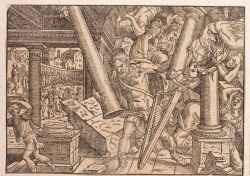Editor: Chiara Petrolini
Missionary Tropics: The Catholic Frontier in India (16th-17th Centuries)
Ann Arbor: University of Michigan Press, 2005.
Agnus Dei. (1635-1640)
Museo del Prado, Madrid
Zur Frühgeschichte des Brandopfers in Israel
in: Biblische Welten. Festschrift für Martin Metzger zu seinem 65. Geburtstag, pp. 231-248
Freiburg: Universitätsverlag, 1993.
Samson breaking the pillars of the house of the Philistines (1535)
from: Chronica, Beschreybung und gemeyne anzeyge, Vonn aller Wellt herkommen....', Frankfurt: Christian Egenolph, 1535
The British Museum, London
Yaja and Upayaja perform a sacrifice for the emergence of Dhrishtadyumna from the fire (1598)
from: from Adi-parva (volume one) of the Razm-nama (Book of Wars) adapted and translated into Persian by Mir Ghiyath al-Din Ali Qazvini, known as Naqib Khan (Persian, d. 1614) from the Sanskrit Mahabharata
The Cleveland Museum of Art
The sacrifice of Samuel at Masfa and the flight of the Philistines [1650]
from: France
Istituto d'Arte Duccio di Boninsegna
Sacrifice des premiers nez chez les Floridiens, expliqué à la pag. 181. / Sacrifice de la dépoūille d'un cerf, à la Floride / Caraïbe offrant la Cassave et l'Ovicou, a un poteau érigé en titre ou symbole de la Divinité (Sacrifice of the firstborn by the Floridians. 2. Sacrifice of the stag in Florida. 3. A Carib offers cassava bread at a post symbolizing the deities) (1724)
from: Plate 7 in Lafitau, Moeurs des sauvages amériquains comparées aux moeurs des premiers temps, Paris, 1724
Relief of Samson destroying the Temple (XVI)
Venice, Scuola Grande di San Rocco, Sala Capitolare, portale dello scalone
De kinderen in't dal Topeth, aan den Molech ter verbrandinge overgegeven (1701)
from: Petrus Cunaeus, Willem Goeree (transl.), De Republyk Der Hebreen, of Gemeenebest der Joden, in drie boeken, Amsterdam, 1701, p. 32
De Loting over de Twee Bokken op den Verfoendag (1701)
from: Petrus Cunaeus, Willem Goeree (transl.), De Republyk Der Hebreen, of Gemeenebest der Joden, in drie boeken, Amsterdam, 1701, p. 433
Temple Worship [1471]
from: Mishneh Torah, Opening panel to Sefer Avodah (Italy or Spain)
New York, The Metropolitan Museum of Art
Historia Brittonum
Cambridge: Cambridge University Press, 1985 [828].
Ob es war vn[d] glaublich sey, daß die Juden der Christen kinder heymlich erwürgen, vnd jr blut gebrauchen : ein treffenliche schrifft, auff eines yeden vrteyl gestelt
[Nürnberg] : [Petreius], ca 1530.
Rama accompanied by a golden statue of Sita performs the Ashwamehda Yajna. The sage Valmiki participates. They sit before a ritual Yajna fire. [1790]
from: folio from a dispersed Ramayana series
Sotheby's
Cimetierre des Sacrifices (Cemetery of Sacrifices) (1745)
from: Prévost, Antoine François, Histoire générale des voyages, ou Nouvelle collection de toutes les relations de voyages par mer et par terre qui ont été publiées jusqu'à présent dans les différentes langues, Paris, Didot, 1754, vol. 12, p. after 544
Human Sacrifice to Vitzilipuztli (1745)
from: Prévost, Antoine François, Histoire générale des voyages, ou Nouvelle collection de toutes les relations de voyages par mer et par terre qui ont été publiées jusqu'à présent dans les différentes langues, Paris, Didot, 1754, vol. 12, p. after 544
The story of the prophet Zakariya (a conflation of Zacharias, the father of John the Baptist, and the Old Testament prophet Zachariah), who according to Muslim legend died a martyr's death. Escaping his pursuers by hiding in a tree that miraculously opened to admit him, Zakariya was betrayed by Iblis, the devil, who pointed out the hem of the prophet's cloak protruding from the trunk. The devil's forces sawed the tree apart and with it Zakariya, whose saintly aura is shown as flames bursting among the leaves. (1550-1560)
from: from a dispersed copy of the Falnama (Book of Omens)
Worcester Art Museum
Samson tears down the temple of the Philistines (1551-1575)
Herzog August Bibliothek Wolfenbüttel

